In this article we introduce the Northeast Pacific Mode, which made a significant contribution to the coldest January-March over the Midwest in the last 31 years (Figure 1*).
If you were one of the 187 million US residents living east of the Rockies in early 2014, there’s a good chance you were impacted by the exceptionally cold weather that arrived in the first week of January, and continued well into March. As highlighted by the USA Today, this was the time when the news media embraced the previously obscure term “polar vortex” and thereby permanently etched the phrase into the public consciousness. Unfortunately, that suggestion for the cause of the cold outbreak is not entirely correct.
The cold wave was partly due to a breakdown of the Stratospheric Polar Vortex, but the stage for severe cold weather was set much earlier by an equally obscure meteorological phenomenon known as the Northeast Pacific Mode. The NPM remains little known to the general public, and admittedly, it doesn’t sound nearly as sinister as the “polar vortex.”
*note World Climate Service anomalies are detrended. This means that any trend in the data between 1950 and 2020 is removed, and thus the resulting anomalies are only associated with the NPM phase specified.
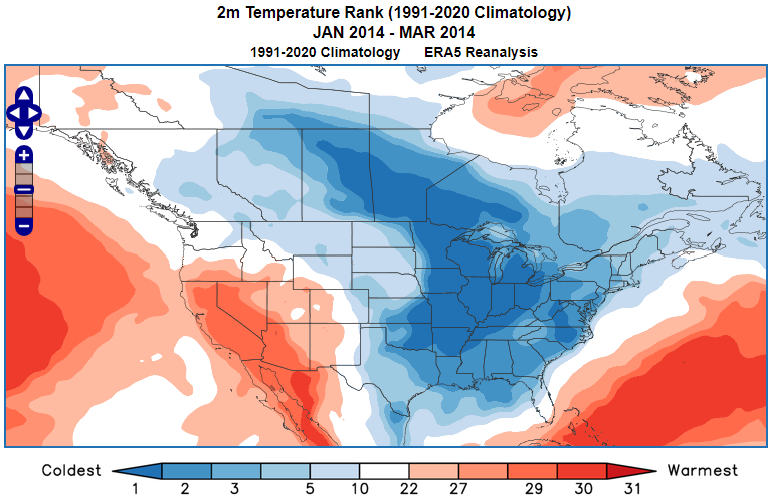
The Northeast Pacific Mode – Introduction
The Northeast Pacific Mode is a cyclical phenomenon of sea surface temperature anomalies in the Northeastern Pacific Ocean. Like the Pacific Decadal Oscillation, the NPM can influence weather conditions across North America, with characteristic patterns occurring at different times of the year. This makes it also important for long-range forecasting of North American conditions.
The NPM climate index oscillates irregularly between positive and negative phases. The positive phase is characterized by warmer than normal waters in the Gulf of Alaska and near the North American coast (Figure 2). The negative phase is a mirror image with cooler than normal waters in the Gulf of Alaska and off the western coast of North America (Figure 3).
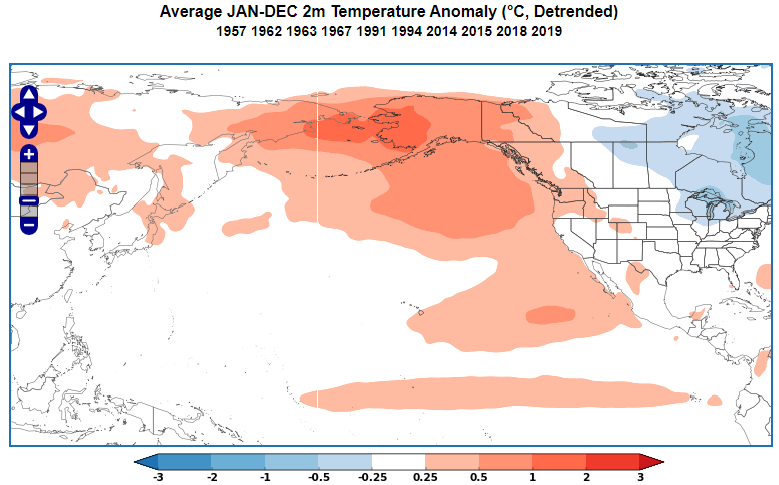
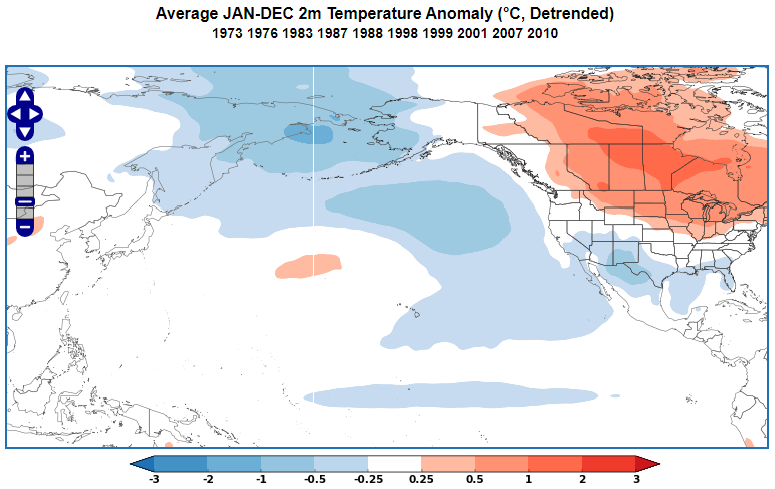
World Climate Service has developed a powerful data mining system that enables users to quickly explore the Northeast Pacific Mode, and many other climate indices, by phase for each month of the year, showing impacts on all the major weather variables right around the globe.

Positive Northeast Pacific Mode – Impacts
Winter
During the positive phase of the NPM in the Northern Hemisphere wintertime, much of CONUS usually experiences below normal temperatures, with only the Southwest likely to be warmer than normal (Figure 4). This was certainly the case during the infamous winter of 2013-14.
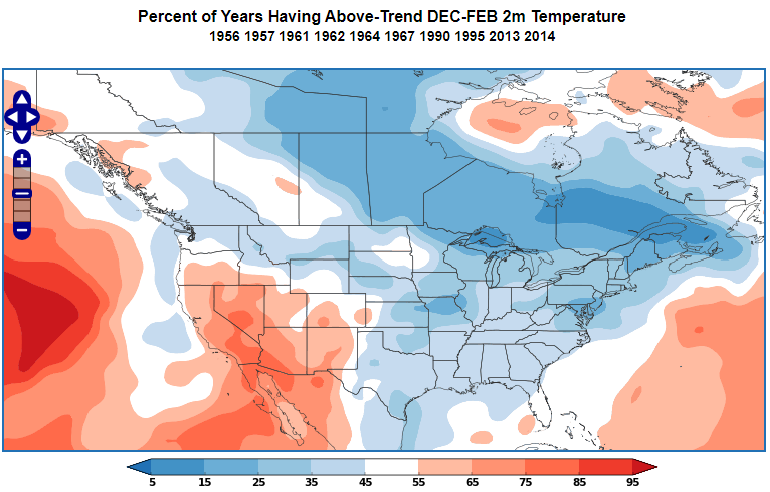
The effects of the Northeast Pacific Mode can be felt across large parts of the globe. A positive NPM in winter is more likely to result in dry weather over Northeastern Europe and the Middle East, whereas the Balkans usually see anomalous rainfall (Figure 5).
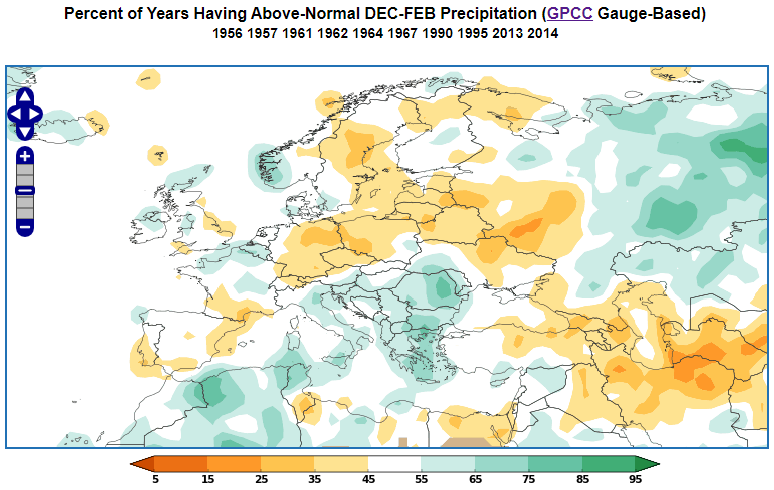
Summer
During the positive phase of the NPM in the Northern Hemisphere summer, much of Europe is usually warmer than normal. Only Western Scandinavia is more likely to be cooler than normal (Figure 6).
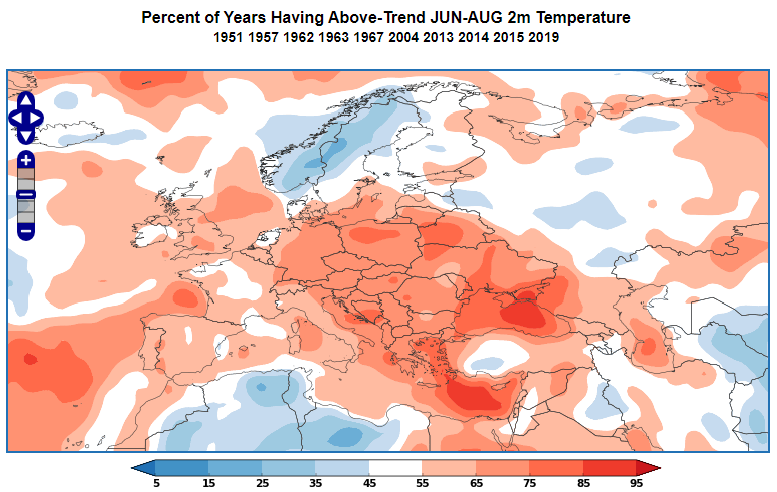
When the NPM is positive during the summer months Texas and the Pacific NW are very likely to be drier than normal. At the same time, the Central and Eastern US usually collects above normal rainfall (Figure 7).
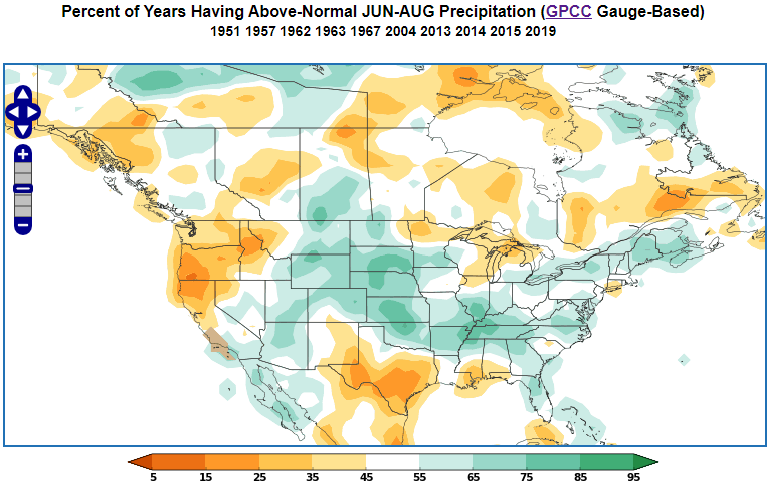
Negative Northeast Pacific Mode – Impacts
Winter
The negative phase of the NPM has a surprisingly strong impact on Europe in the wintertime. As a result, much of Northern Europe is very likely to be warmer than normal. Only the Central Mediterranean is usually colder than normal (Figure 8).
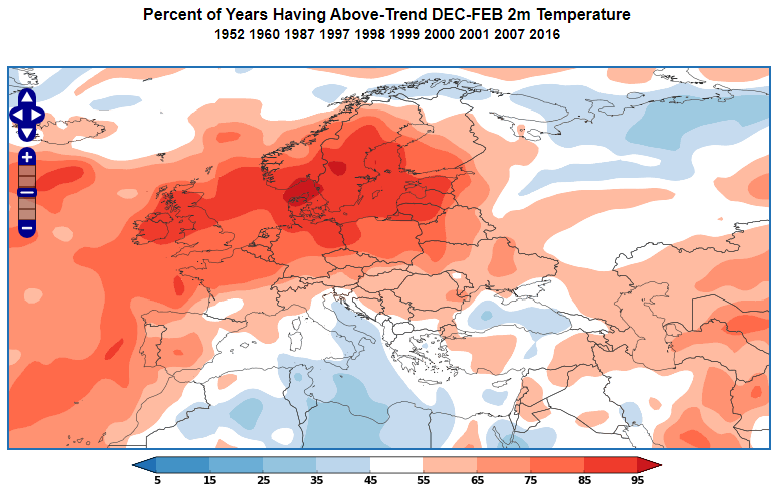
The negative phase of the NPM can also impact Asia in winter. Figure 9 shows a tendency toward drier than normal weather across Japan and large parts of China. In contrast, Eastern China and Southeast Asia tend to be wetter than normal.
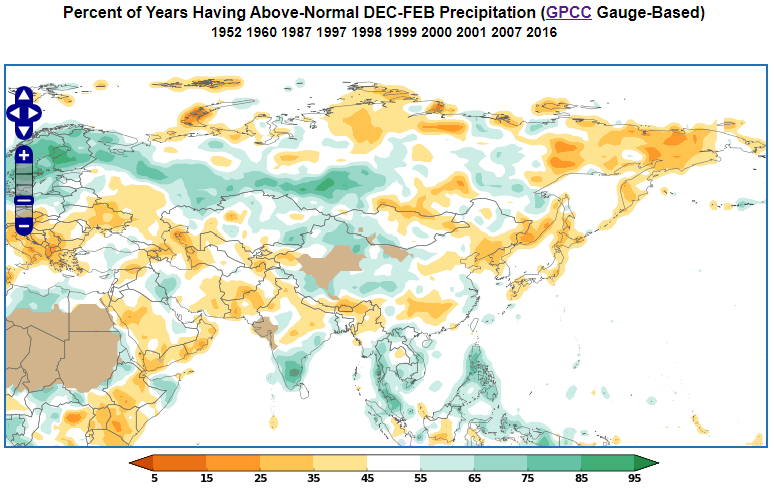
Summer
During the negative phase of the NPM in the Northern Hemisphere summer, much of the Eastern and Central US is likely to be warmer than normal, particularly in the Midwest (Figure 10). At the same time, there is a strong tendency for cooler than normal weather on the western side of the Rockies.
On the other side of the Atlantic, a negative NPM usually leads to dry summers across the north of Europe. Conversely, Southern Europe is often wetter than normal (Figure 11).
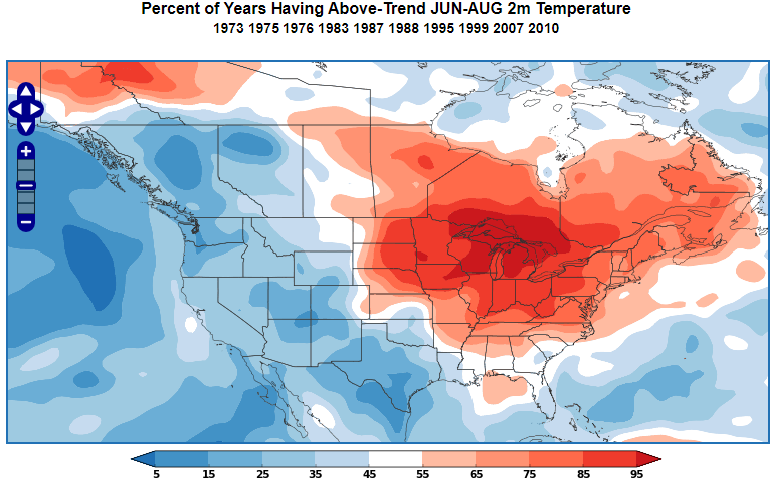
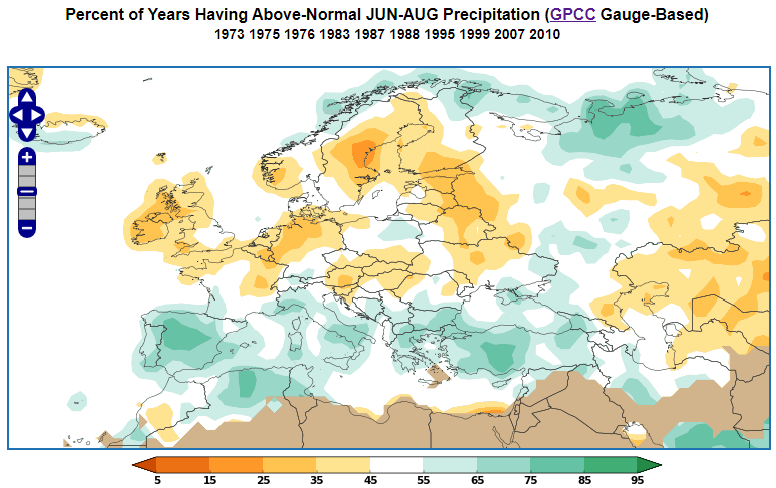
Northeast Pacific Mode and Long-Range Prediction
The Northeast Pacific Mode typically remains in a given phase for many months (Figure 12). That means the NPM climate index is a very useful climate index for both subseasonal and seasonal prediction.
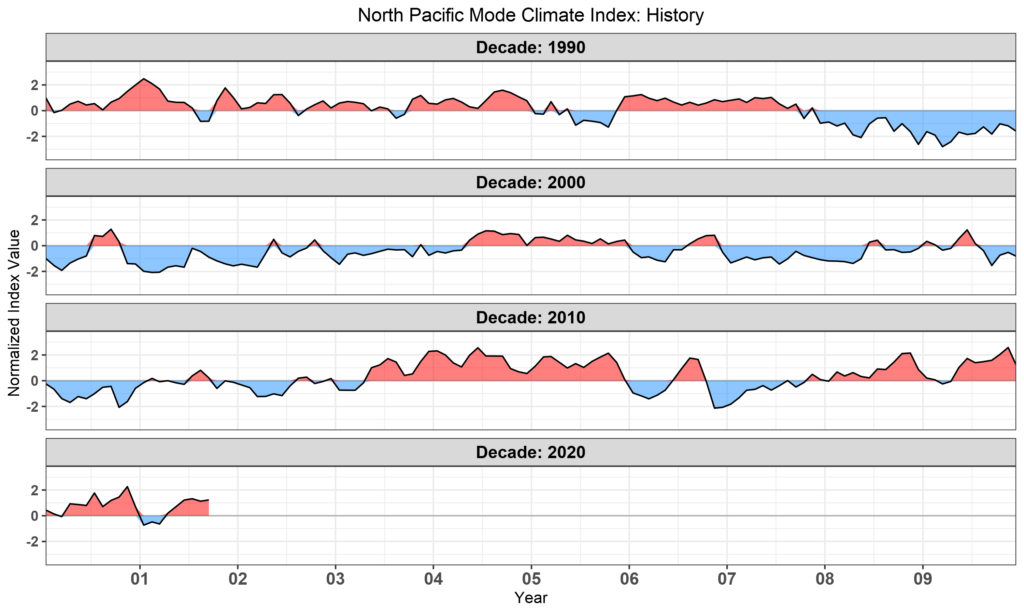

Concluding remarks on the Northeast Pacific Mode
The Northeast Pacific Mode is a cyclical variation of sea surface temperature anomalies over the Northeast Pacific Ocean that is distinct from the Pacific Decadal Oscillation. The phases of the NPM coincide with identifiable weather patterns over large parts of the globe across all seasons.
The Northeast Pacific Mode phases can persist for many months which makes the NPM a prime consideration in subseasonal and seasonal forecasting. Scientists believe that the NPM was a major factor in the record-breaking cold spell which struck the United States in the winter of 2013-14.